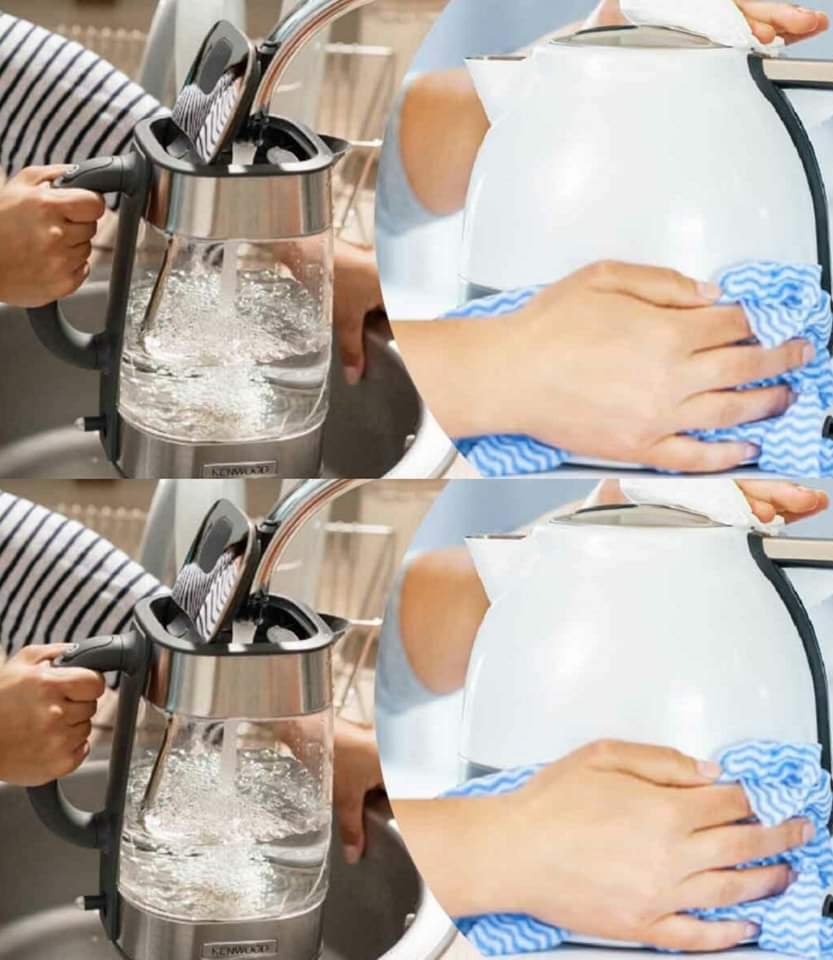ADVERTISEMENT
negar-water solution for 10–15 minutes to remove mineral deposits. Rinse the filter thoroughly before placing it back in the kettle.
5. Prevent Limescale Buildup with Distilled Water
One way to prevent limescale buildup in the first place is to use distilled water instead of tap water. Distilled water has fewer minerals, which means less limescale will accumulate inside your kettle over time. While this may not be practical for every use, switching to distilled water for boiling can help reduce the need for frequent deep cleanings.
6. Empty Your Kettle After Every Use
After each use, always empty your kettle to prevent water from sitting inside and leaving behind residue. Stagnant water can also encourage mold and mildew growth, especially if the kettle is stored in a damp area.
How to Do It:
- Simply pour out any leftover water after boiling.
- Allow the kettle to cool and dry with the lid open, ensuring that moisture doesn’t linger inside the kettle.
7. Perform Regular Deep Cleans
Even with regular maintenance, it’s essential to perform a deep cleaning of your kettle every few months. This will help remove any hidden grime, mineral buildup, and keep the kettle functioning at its best.
How to Do It:
- Every few months, follow the vinegar or baking soda method to deep clean your kettle.
- Check the interior for any remaining limescale, stains, or grime, and scrub it gently with a sponge or brush.
- After cleaning, be sure to rinse the kettle thoroughly with clean water to remove any residue from the cleaning agents.
8. Avoid Using Abrasive Scrubbers
When cleaning your kettle, avoid using abrasive sponges, scrubbers, or harsh cleaning agents that could scratch or damage the surface. This is especially important for kettles with non-stick coatings or delicate finishes, such as stainless steel or glass kettles.
What to Use:
- Opt for soft sponges or microfiber cloths to wipe down your kettle.
- Plastic scrubbers or toothbrushes can be used for targeted cleaning, especially in hard-to-reach spots like the spout or base.
9. Dry the Kettle Properly
After cleaning your kettle, it’s important to dry it thoroughly to avoid water spots and mold growth. Wipe down the interior and exterior of the kettle with a dry, clean cloth, and leave the lid open to allow air circulation and complete drying.
Final Thoughts: Keep Your Kettle Sparkling Clean with Minimal Effort
A clean kettle not only looks better but also helps to maintain the quality of your boiled water, ensuring that each cup of tea or coffee tastes fresh and clean. By following these easy and natural cleaning tips—whether using vinegar, baking soda, or just regular dish soap—you can keep your kettle looking sparkling clean with minimal effort.
So, don’t let your kettle fall victim to grime, limescale, or mineral buildup. With regular care and cleaning, your kettle will continue to serve you for years to come, ensuring every cup of hot water is a perfect one!
